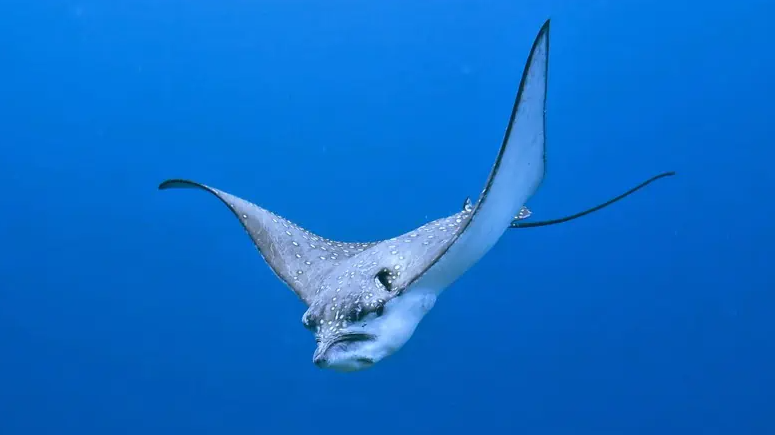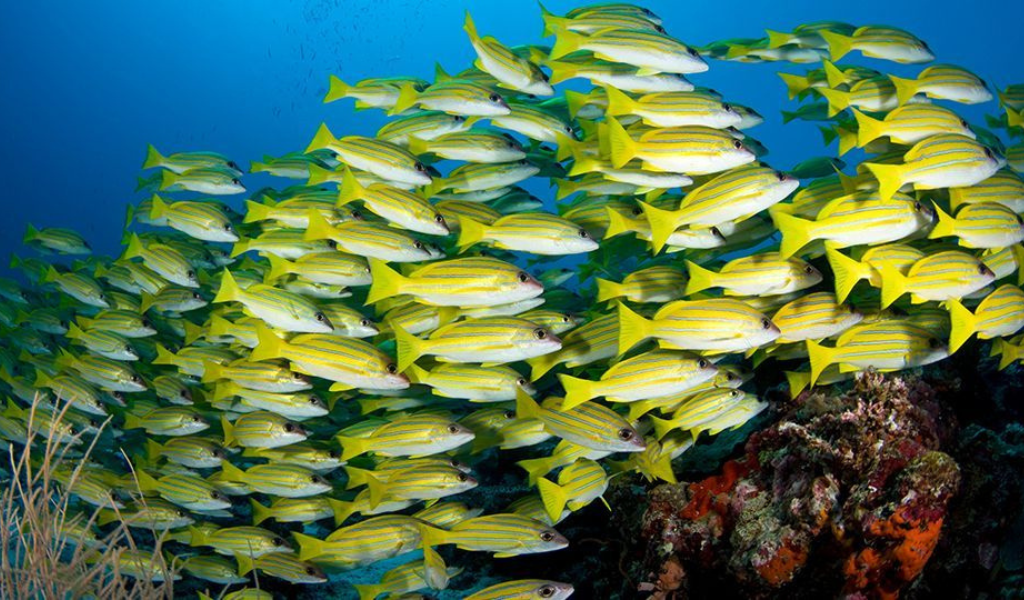

What Awaits Visitors Below The Surface In The Maldives’ Hidden World?
Wednesday 14th of September 2022
Thousands of tourists visit our shores every year seeking for adventure and relaxation in the calming paradise. Although, the shores offer multiple recreational and relaxing experiences, the real treasures lie underwater among the coral reefs of the blue. So what can you see in these hidden worlds?
Plethora of Colourful Fishes
The Maldivian coral gardens are graced by many miscellaneous fishes of disparate nature. From the kids-favourite clown fish and Blue Tang, owing their fame to the Disney cartoon, Finding Nemo, to the vibrant scales of the parrot fish and even the striped species of butterfly and angel fishes can be seen in schools among the corals. The more solo club members also visit the reef including the barracuda, the camouflaging groupers and wrasses, creating a congregation of a diverse delegation.
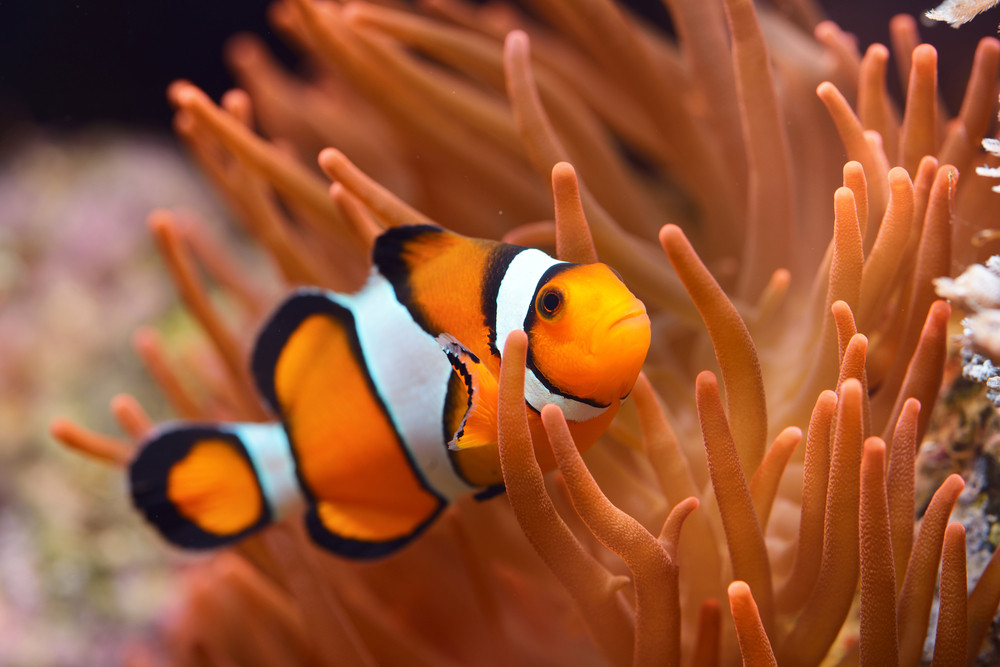
Everyone’s favourite- Turtles
Among the 7 species of turtles in the world, 5 of them can be found in the Maldives. These gentle creatures have been protected in the country since 1995 and are frequently seen in the outskirts of coral reefs. The most commonly sighted turtles in the Maldives are the Hawksbill and the Green Sea Turtles. The other three species that pay a visit to our home include Leatherback, Loggerhead and the Olive Ridley turtles.
These creatures are often seen in diving and snorkelling trips, making a visit to the underwater world a well-worthy experience!
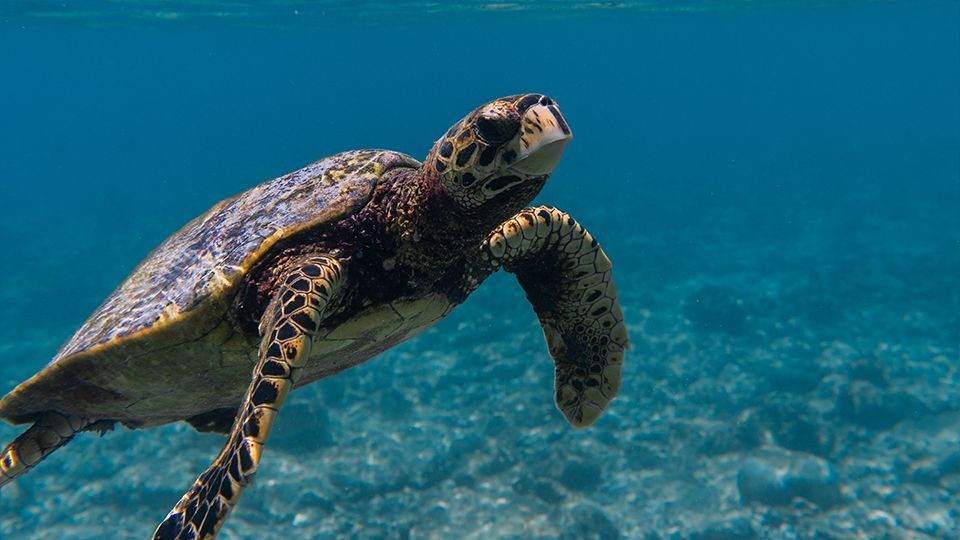
The Not-So-Dangerous Sharks
Contrary to popular belief, sharks frequenting the coral reefs are pretty harmless. The sharks usually pull stops at coral reefs in their quest to find food among the swarming fauna and flora. Some of the shark species seen scouting for food include the white-tip sharks, hammerhead and nurse sharks.
One other shark species that is seen in the Maldives is the spotted giants of the ocean, the Whale Sharks! These elusive creatures can be seen in the UNESCO Biosphere Reserve in Baa Atoll in famous dive sites like the Hanifaru Bay.
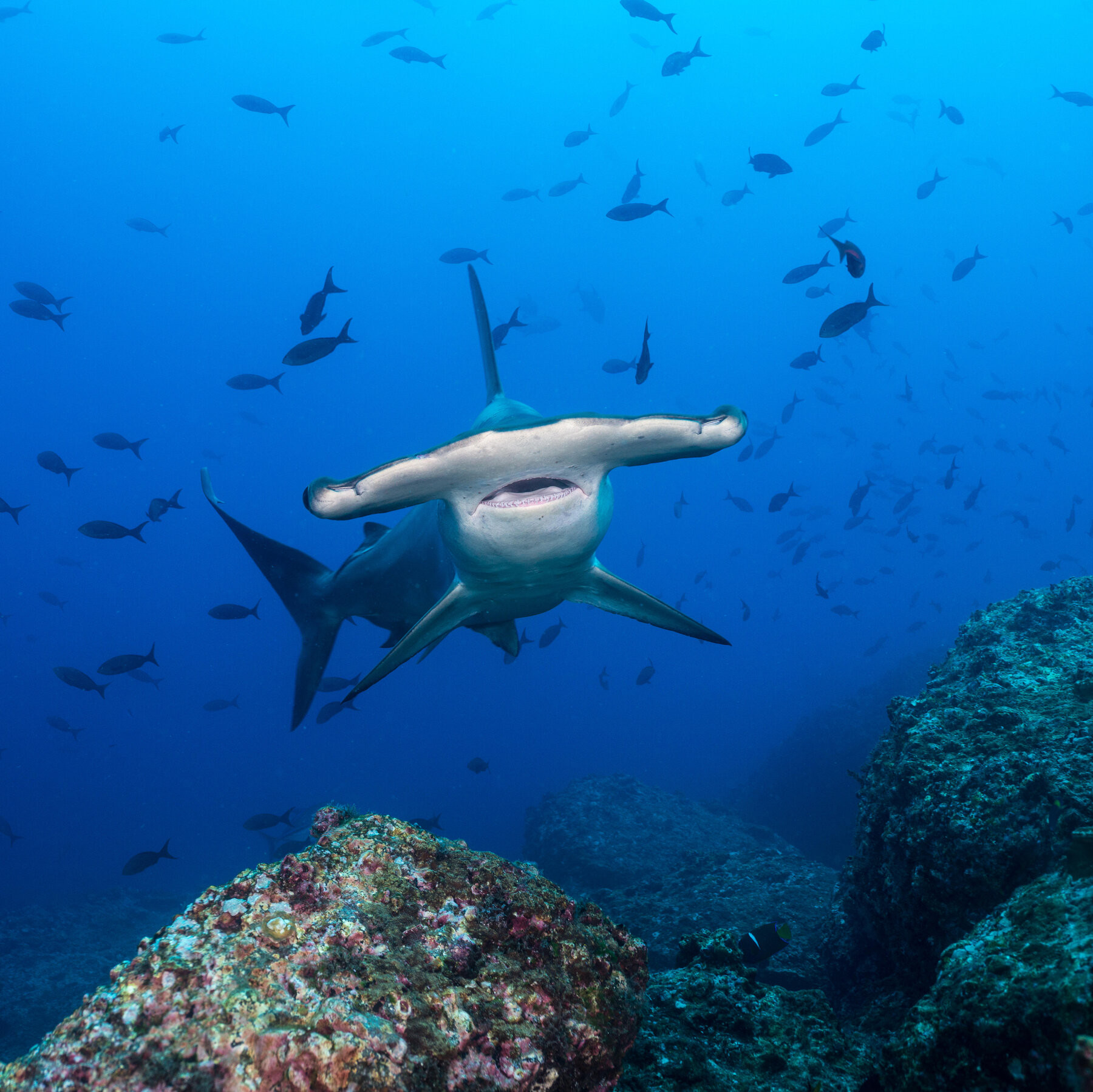
The Roaming Rays
Rays are definitely not rare in the Maldives. From Stingrays to Mantas to Eagle Rays all thrive in the underworld. Stingrays are sighted many times during snorkelling as they en-mass at feeding stations. Some resorts even hold stingray feeding events at their properties.
The ultimate spot to spot a Manta ray is Hanifaru Bay and not just one but hundreds of them. As their main food source is plankton, the rays arrive in large masses to this area during the plankton bloom. The eagle rays love to burrow in the sand and hide away but they also have a poisonous spike so beware! In a moment of defense, lethal spikes will be injected into the body, so stray away from them.
